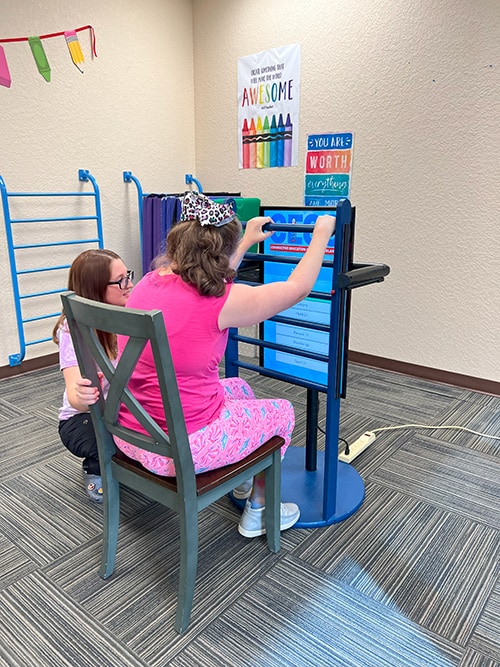EXCLUSIVE: Rethinking assistive tech for children with cerebral palsy

Dr. Krisztina Weiszhaupt, the executive director of the Conductive Education Center of Orlando, a specialised school in Florida, USA, discusses a unique assistive technology it is using in the classroom to help children and individuals with neurological motor disabilities, like cerebral palsy.
What is CECO, and what is unique about the Conductive Education programme?
Dr. Weiszhaupt: “CECO is a centre serving individuals with neurological motor disabilities, like cerebral palsy.
“Our centre utilises Conductive Education (CE), a unique learning method integrating an intensive and motivating approach to the development of gross and fine motor skills, mobility and balance, flexibility and motion, social skills, communication, and speech, allowing our students to maximise their physical independence and strength.
“CE originated in Hungary and is based on the idea that despite damage to the nervous system, it still possesses the capacity to form new neural connections.”
CECO partnered with a university to build a new assistive technology for the classroom. Can you explain more about that and the recent patent?
Dr. Weiszhaupt: “Students and educators from Full Sail University, a school in Florida, were on a mission to find ways to support a local community in need using technology, as part of the Simulation & Visualization Bachelor of Science degree programme. They found out about CECO, and the idea was born to build assistive technology to help support our students.
“Collaborating closely with our team of conductors (aka CE teachers), they built a brand-new assistive technology that took a new approach to the traditional ladders used in CE to help with strength building and coordination. They transformed this wooden ladder into an interactive tool for CECO students to play educational and engaging games using a monitor and interactive controls.
“This technology has seen incredible results–keeping students engaged and excited to use the interactive ladder to improve cognitive and physical strength and boost their confidence. CECO received a patent for the technology, allowing us to develop the technology further for use in the classroom and other CE centres around the country. We’re really excited about the future of this technology.”
Why is assistive technology so important for individuals with neurological motor disabilities?
Dr. Weiszhaupt: “Assistive technology allows individuals with neurological motor disabilities to maintain a level of independence that would not otherwise be possible.
“In the example of the interactive ladder, individuals with motor disabilities might not be able to play traditional video games with a controller, but the ladder allows them to control the game through the rungs on the ladder, while using the device to practice strength and coordination.”
Assistive technology has come a long way in recent years. What are your thoughts on the current assistive technology available to people with neurological motor disabilities? Is there progress still needed?

“However, there’s a long way to go to give these individuals the same opportunities as everyone else. These devices are incredibly expensive, and we offer grants and scholarships to supplement the cost for many of our families, but by and large it can be a significant financial burden on individuals with neurological disabilities and their loved ones.”
What other assistive technologies do you use at CECO?
Dr. Weiszhaupt: “At CECO, many of our students use augmentative and alternative Communication (AAC) devices. We also utilise adaptive switches to offer easier movement solutions, such as pressing a button instead of turning a knob, so that students can operate electronic devices independently.
“Another technology we use is BlazePods, which is often used in PT and OT to test reaction time. We use this technology to stimulate physical and cognitive activity during lessons.”
What programmes do you offer for individuals who don’t live in Florida or the US?
Dr. Weiszhaupt: “CECO offers virtual conductive education programmes for students and families across the US and internationally. The Virtual Program provides parents and students access to CECO’s trained conductors to develop a programme addressing each participant’s unique needs and teach techniques and strategies to put into practice in everyday situations.
“The programme consists of one-on-one weekly tutoring sessions with the parent and student focusing on daily life skills such as sitting, walking, and eating. These one- to two-hour sessions may include passive techniques; gross and fine motor activities performed in a lying, sitting, or standing position; academics; chores; and life-skills.
“The education curriculum is designed to improve cognitive, communication, and fine motor skills. Students can enrol in the virtual programme year-round on our website here.”

